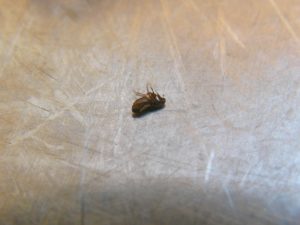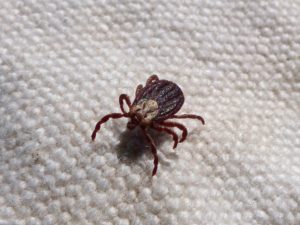If you’re like me, then you probably assumed that ticks and fleas were pretty much the same thing when you were younger. Both of them were brownish in color, insisted on latching on and sucking the blood of our pets, and were practically invisible to the naked eye unless you looked at them closely due to how small they were.
It then became a surprise when I found out that ticks were, in fact, quite different from fleas, in terms of many, many things. They may look similar in appearance as well as what they feed on, but under closer inspection, there are also a considerable number of differences that both of them have with each other.
So, to all those who aren’t like me and want to find out what the difference between these two parasites are, then read on.
Similarities
Let’s start with some similarities. These are usually the most noticeable parts that one can see about both of them at first glance, which may be why some people see them as similar.
For instance, fleas and ticks…
-Are both tiny! Fleas are much smaller than ticks, however, being between 1/16th of an inch to 1/8th of an inch in size. Ticks, on the other hand, start off at around 1/4th of an inch in size, but eventually grow bigger as they engorge themselves in blood.
-Feed on blood. Depending on the species, they may have a preference to certain animals while avoiding others. The brown dog tick likes dogs and usually ignores humans.
-Are a considerable health concern for both animals and humans alike. This is because ticks and fleas are both vectors for disease transmission and are usually able to pass them on to unsuspecting humans or animals that they latch on to. The longer they are able to engorge in the blood of someone, the higher the chances of the person contracting the disease. Fleas transmit other parasites like tapeworms, while ticks transmit diseases like Lyme disease.
Differences
Now we move on to their differences. These are usually the things that aren’t as obvious to the average human person unless researched or observed. After all, who wants to look at a flea or a tick for long? Gross.
Type of animal
Believe it or not, ticks and fleas aren’t even classified as the same type of animal. For instance, the biological structure of a tick, most notably, its six legs, shows that it is an insect.
On the other hand, a tick has eight legs, and they are classified as arachnids with no antennae.
Lifespan
On average, an adult flea can live from several weeks to several months. On the other hand, in ideal conditions, ticks can live for as long as three years. This, however, presumes that a tick has access to all the blood it wants in the environment it desires. If it is unable to find a host to sustain itself after some time, it will die.
Still, their lifespan is not to be underestimated. Certain tick species can survive months without feeding.
Egg laying habits
Fleas tend to lay their eggs on their host as the days go on, and they can lay as much as up to 40 eggs per day until the day that they die.
In comparison, ticks, after engorging themselves, will fall off from their hosts then lay their eggs in a sheltered place over the course of a days, in which they can dump around thousands. Once a tick manages to finish laying its eggs, its body deflates, and it dies.
How do you get them?
Fleas usually come from another infested animal, thanks to the fact that said animal can drop the eggs of a flea while it roams around. Once your pet gets fleas and brings it home, it can cause an infestation fast, making it very difficult to completely eradicate. The fleas will feed on your pets, and may even feed on you and the other people who live with you.
Ticks, on the other hand, don’t usually cause infestations quickly. Ticks usually hide in places like tall grass, waiting for a suitable host to wander nearby, before they latch on, so if you take walks around these types of places, expect to get a couple of ticks every so often.
As ticks required to have taken a lot of blood before they are able to lay their eggs, finding and removing the offending ticks quickly can prevent them from reaching that point, thus saving you from a tick infestation.
Which of the two is more dangerous?
Fleas are much more annoying as they can be difficult to contain. They are easy to catch, and they spread considerably fast, making flea prevention in the first place the best thing you can do to combat them. A pet that is allowed to go outdoors on its own, like a cat, is much more likely to catch fleas from infested animals or environments and bring them back home.
But while fleas are much more annoying to deal with as a whole, ticks can be deadlier, thanks to the myriad of diseases that they carry. Lyme disease, as mentioned earlier, is one, but they can also spread Rocky Mountain fever. Some ticks can even cause you to become allergic to red meat!


